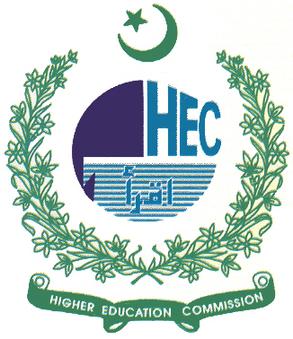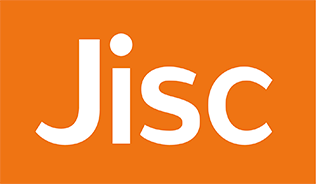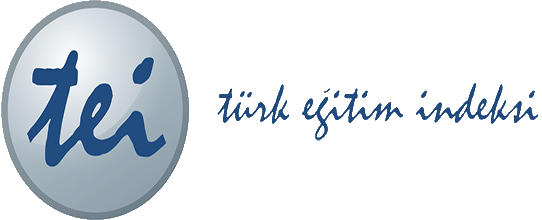Knowledge, Attitude and Practice of Upper Cross Syndrome among Physiotherapists in Karachi
UCS among Physiotherapists of Karachi
Keywords:
Musculoskeletal Disorders, Pain, Posture, Physical TherapyAbstract
Background: Upper Cross Syndrome (UCS) has been considered one of the most prevalent musculoskeletal conditions reported worldwide. Understanding this condition is crucial for medical professionals to improve patient care. Despite that, data regarding knowledge, attitudes, and practice patterns in treating UCS among physiotherapists still need to be discovered.
Methods: A cross-sectional survey was conducted on 101 physiotherapists enrolled through purposive sampling techniques from secondary and tertiary care settings. All the participants were given consent and a structured self-designed questionnaire on KAP regarding UCS.
Results: The results showed good, fair, and poor knowledge of 65.3%, 23.8%, and 10.9% of physiotherapists, respectively. Meanwhile, 95%, 4% and 1% physiotherapists showed positive, neutral and negative attitudes, respectively. Furthermore, 61.4% of physiotherapists are good in practice, 21.8% are doing fair practice, and 16.8% have poor practice in giving the interventions to the patients of UCS. Evidence suggests a significant correlation between the attitude and qualification of the respondents (p<0.01), and there was no significant association between knowledge and qualification and practice and qualification (p>0.05).
Conclusion: It has been observed that physiotherapists have good knowledge and attitudes towards UCS. They are practicing well in this domain. Physical therapists are more concerned with promoting physical activity, so they must take responsibility for providing effective treatment at UCS.
References
Chang MC, Choo YJ, Hong K, Boudier-Revéret M, Yang S. Treatment of Upper Crossed Syndrome: A Narrative Systematic Review. Healthcare (Basel). 2023;11(16):2328.
Chaudhuri S, Chawla JK, Phadke V. Physiotherapeutic Interventions for Upper Cross Syndrome: A Systematic Review and Meta-Analysis. Cureus. 2023 Sep 18;15(9)
Sepehri, S., Sheikhhoseini, R., Piri, H. et al. The effect of various therapeutic exercises on forward head posture, rounded shoulder, and hyperkyphosis among people with upper crossed syndrome: a systematic review and meta-analysis. BMC Musculoskeletal Disorders. 2024 25(1):105.
Jaideep A, Eapen C, Prabhakar AJ, Patel V. Upper-crossed syndrome and disability in shoulder adhesive capsulitis. J Bodyw Mov Ther. 2023 Oct;36:282-290.
Seidi F, Bayattork M, Minoonejad H, Andersen LL, Page P. Comprehensive corrective exercise program improves alignment, muscle activation and movement pattern of men with upper crossed syndrome: randomized controlled trial. Sci Rep. 2020;10(1):20688.
Yaghoubitajani Z, Gheitasi M, Bayattork M et al. Corrective exercises administered online vs at the workplace for pain and function in the office workers with upper crossed syndrome: randomized controlled trial. International Archives of Occupational and Environmental Health. 2022;95: 1703–18.
de-la-Iglesia L, Bravo C, Rubí-Carnacea F. Upper crossed syndrome in secondary school students: A mixed-method study. J Taibah Univ Med Sci. 2023;18(4):894-907.
Kibria MG, Parvez MS, Saha P, Talapatra S. Evaluating the ergonomic deficiencies in computer workstations and investigating their correlation with reported musculoskeletal disorders and visual symptoms among computer users in Bangladeshi university. Heliyon. 2023;9(11):e22179.
Kuo YL, Huang KY, Kao CY, Tsai YJ. Sitting Posture during Prolonged Computer Typing with and without a Wearable Biofeedback Sensor. Int J Environ Res Public Health. 2021;18(10):5430
Fatima A, Ashraf HS, Sohail M, Akram S, Khan M, Azam H. Prevalence of upper cross syndrome and associated postural deviations in computer operators; a qualitative study. AJAHS. 2022;7(3).
Karimian R, Rahnama N, Ghasemi G, Lenjannejadian S. Photogrammetric Analysis of Upper Cross Syndrome among Teachers and the Effects of National Academy of Sports Medicine Exercises with Ergonomic Intervention on the Syndrome. J Res Health Sci. 2019 Jul 3;19(3):e00450.
Piri H, Hajian M, Mirkarimpour SH, Sheikhhoseini R, Rahimi M. The effect of 12-week corrective exercises on the postural angles of beautician females with upper crossed syndrome: a clinical trial study. Women’s Health Bulletin. 2021 Apr 1;8(2):91-7.
Sasun AR, Jawade S, Chitale N, Chitale NV. We are measuring the efficacy of myofascial rollers and post-isometric relaxation techniques in relieving pain intensity and postural deviation using plumb line assessment to treat upper cross syndrome in dental undergraduate (UG) students. Cureus. 2022 Oct 2;14(10).
Zad SS, Patil P. Effectiveness of Janda’s approach in upper cross syndrome in medical students. Annals of the Romanian Society for Cell Biology. 2021 Jul 13;25(6):17385-99.
Cramer H, Mehling WE, Saha FJ, Dobos G, Lauche R. Postural awareness and its relation to pain: validation of an innovative instrument measuring awareness of body posture in patients with chronic pain. BMC Musculoskelet Disord. 2018;19(1):109
Bayattork M, Seidi F, Minoonejad H, Andersen LL, Page P. The effectiveness of a comprehensive corrective exercises program and subsequent detraining on alignment, muscle activation, and movement pattern in men with upper crossed syndrome: a parallel-group randomized controlled trial protocol. Trials. 2020;21(1):255.
Slater, Diane & Korakakis, Vasileios & O’Sullivan, Peter & Nolan, David & O’Sullivan, Kieran. (2019). “Sit Up Straight”: Time to Re-evaluate. Journal of Orthopaedic & Sports Physical Therapy. 49. 562-564. 10.2519/jospt.2019.0610.
Ahmad S, Komal S, Shafique S, Altaim T. Comparison of myofascial trigger point release effectiveness with manual therapy and myofascial release combined with self-stretching in upper cross syndrome: JRCRS. 2019; 7 (1): 3-6. Journal Riphah College of Rehabilitation Sciences. 2019 Mar 30;7(1):3-6.
Rana AA, Ahmad A, Gillani SA, Idrees MQ, Awan I. Effects of conventional physical therapy with and without muscle energy techniques for treatment of Upper Cross Syndrome. Rawal Medical Journal. 2020 Jan;45(1):127-32.
Rayjade A, Yadav T, Chintamani R, Joshi N. Comparative effectiveness of Kinesio taping and Ift in upper cross syndrome-A randomized clinical trial. Indian Journal of Forensic Medicine & Toxicology. 2020 Jul 30;14(3):127-32.
Gillani SN, Ain Q-, Rehman SU, Masood T. Effects of eccentric muscle energy technique versus static stretching exercises in managing cervical dysfunction in upper cross syndrome: a randomized control trial. J Pak Med Assoc. 2020 Mar;70(3):394-98
Nitayarak H, Charntaraviroj P. Effects of scapular stabilization exercises on posture and muscle imbalances in women with upper crossed syndrome: A randomized controlled trial. Journal of back and musculoskeletal rehabilitation. 2021 Jan 1;34(6):1031-40.
Mahmood T, Afzal W, Ahmad U, Arif MA, Ahmad A. Comparative effectiveness of routine physical therapy with and without instrument assisted soft tissue mobilization in patients with neck pain due to upper crossed syndrome. J Pak Med Assoc. 2021 Oct;71(10):2304-2308. doi: 10.47391/JPMA.03-415.
Ranđelović I, Jorgić B, Antić V, Hadžović M. Effects of exercise programs on upper crossed syndrome: a systematic review. Fizičko vaspitanje i sport kroz vekove. 2020;7(2):152-68.
Amjad F, Azeem MT, Daula SA, Ijaz B. Effectiveness of McKenzie traction and exercises on neck pain secondary to upper crossed syndrome. Journal of Health, Medicine and Nursing. 2020 May 31;74:55-65.

Downloads
Published
Issue
Section
License
Copyright (c) 2024 Naseem Ghazal, Safia Bano, Farwah Sultan, Aftab Ahmed Mirza Baig, Bushra Mehwish

This work is licensed under a Creative Commons Attribution-NonCommercial 4.0 International License.













